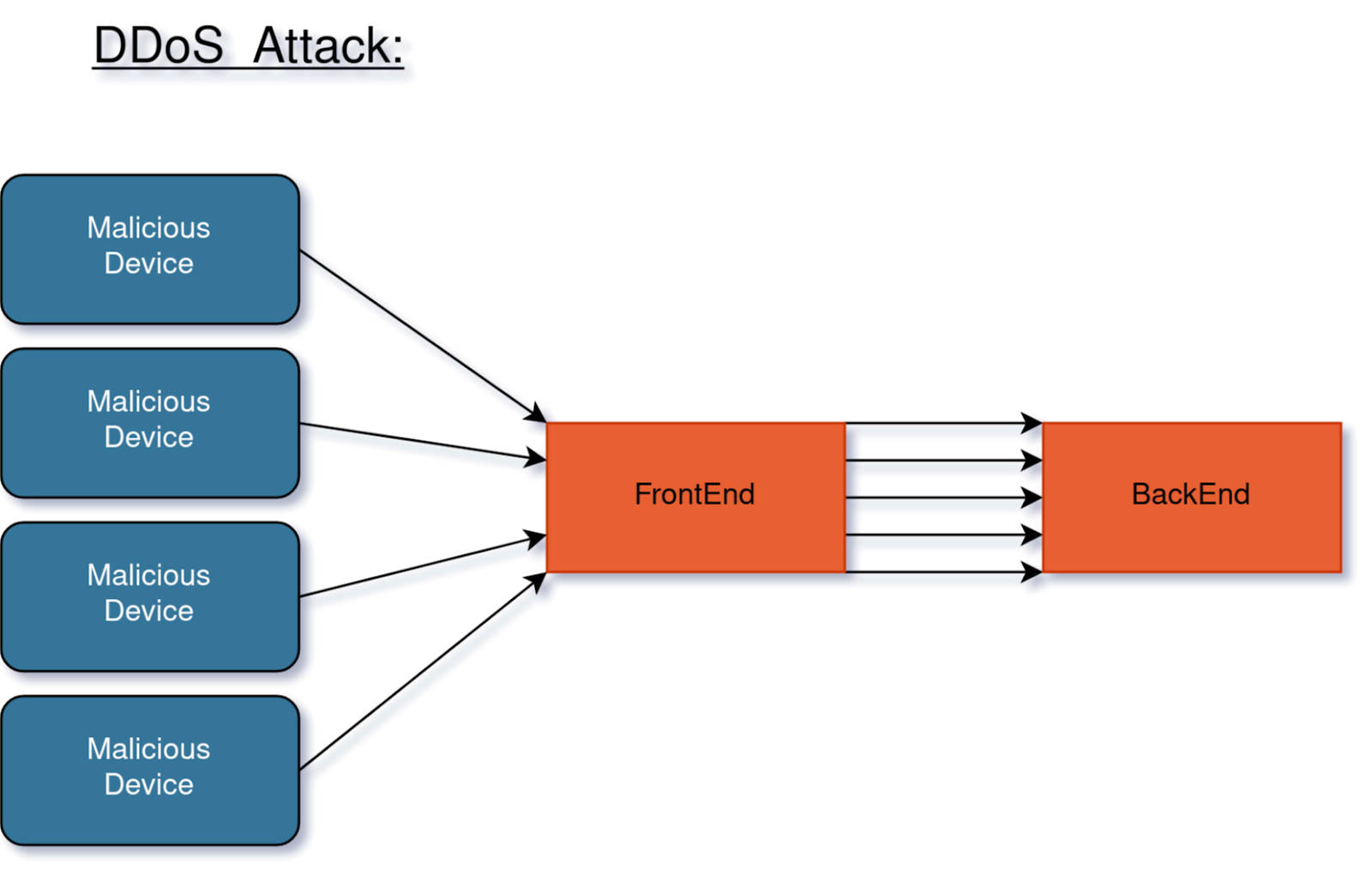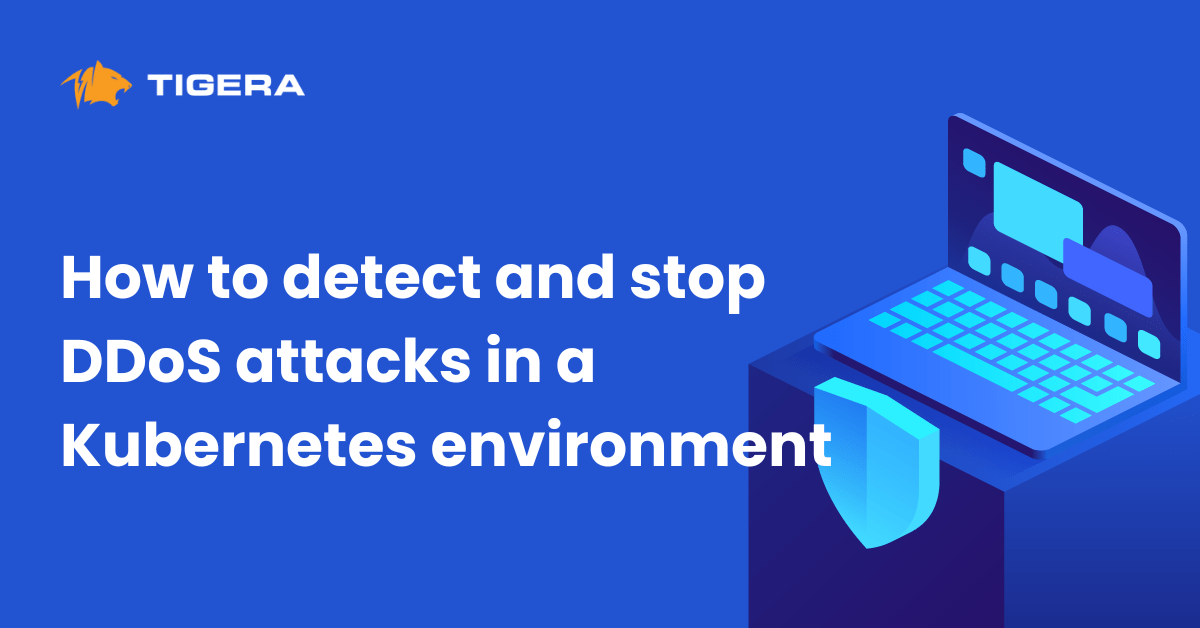A DDoS attack on Kubernetes targets the cluster, overwhelming resources and disrupting services. It poses significant challenges to availability and performance.
Kubernetes, an open-source container orchestration platform, is vulnerable to Distributed Denial of Service (DDoS) attacks. Such attacks flood the system with traffic, exhausting resources and causing service disruptions. Businesses relying on Kubernetes must implement robust security measures to mitigate these risks.
Effective strategies include rate limiting, monitoring, and autoscaling. By adopting these practices, organizations can enhance the resilience of their Kubernetes clusters. Understanding the implications of DDoS attacks and proactively securing the infrastructure is crucial. This ensures continuous service availability and optimal performance, safeguarding the business operations from potential threats.
Introduction To Ddos Attacks
DDoS attacks are a major threat in the digital world. They target systems, networks, and services. Kubernetes, a popular container orchestration system, is not immune. Understanding DDoS attacks helps protect Kubernetes clusters.
What Is A Ddos Attack?
A DDoS (Distributed Denial of Service) attack overwhelms a system with traffic. It uses multiple sources to flood the target. The goal is to make the system unavailable to users.
DDoS attacks exploit network bandwidth, memory, and CPU resources. They can cause significant downtime and loss of revenue. Protecting against DDoS is crucial for maintaining service availability.
Common Types Of Ddos Attacks
There are several types of DDoS attacks. Each targets different system resources. Here are the most common types:
- Volume-based attacks: These use high traffic to overwhelm the bandwidth. Examples include UDP floods and ICMP floods.
- Protocol attacks: These exploit server resources or network equipment. Examples are SYN floods, fragmented packet attacks, and Ping of Death.
- Application layer attacks: These target web applications. They aim to exhaust server resources. Examples include HTTP floods and Slowloris attacks.
Understanding these types helps in creating effective defense strategies. Kubernetes can be configured to mitigate these attacks.

Kubernetes Vulnerabilities
Kubernetes, a powerful container orchestration platform, has many benefits. Yet, it also has vulnerabilities. Understanding these can help protect your clusters from DDoS attacks. Let’s delve into why Kubernetes is targeted and its potential weak points.
Why Kubernetes Is Targeted
Kubernetes is widely used in cloud environments. Attackers target Kubernetes because of its popularity and potential rewards.
- High resource availability: Clusters often have significant resources.
- Complexity: Misconfigurations can happen easily due to its complexity.
- Containerized applications: These are attractive targets for attackers.
Potential Weak Points
There are several weak points in Kubernetes that attackers exploit. Knowing these can help you secure your system better.
| Weak Point | Description |
|---|---|
| API Server | This is the core of Kubernetes. Attacks can disrupt the entire cluster. |
| Etcd Datastore | Stores configuration and state data. Compromising it can lead to data loss. |
| Network Plugins | These manage network policies. Vulnerabilities here can lead to unauthorized access. |
| Container Images | Malicious images can be injected into the cluster. |
Addressing these vulnerabilities can strengthen your Kubernetes security. Regular audits and updates are essential.
Impact On Cloud Infrastructure
DDoS attacks on Kubernetes can severely impact cloud infrastructure. These attacks can disrupt services and cause financial and operational costs.
Service Disruptions
DDoS attacks can cause major service disruptions. These attacks flood your systems with traffic, making your services unavailable. This can affect user experience and damage your reputation.
- Increased latency: Users face delays in accessing services.
- Service downtime: Services become completely inaccessible.
- Data loss: Critical data can be lost during attacks.
Financial And Operational Costs
DDoS attacks lead to high financial and operational costs. Businesses may need to spend a lot of money to mitigate attacks and restore services.
| Cost Type | Description |
|---|---|
| Mitigation | Expenses for anti-DDoS solutions and services. |
| Recovery | Costs to restore and secure affected systems. |
| Lost Revenue | Income lost during service downtime. |
Operational costs also rise. IT teams need to work overtime to fix issues. This can lead to burnout and decreased productivity.
- Identify the attack source.
- Mitigate the attack using security measures.
- Restore services to normal operations.
Understanding these impacts helps in preparing better defenses against DDoS attacks.
Detection Techniques
DDoS attacks can cripple a Kubernetes cluster. Detecting these attacks early is crucial. Here, we explore effective detection techniques.
Monitoring Traffic Patterns
Monitoring traffic patterns helps identify unusual spikes in network activity. Consistent tracking of traffic patterns can reveal potential DDoS attacks. Kubernetes offers tools like kube-prometheus and kube-metrics-server to monitor traffic.
- Set up alerts for unusual traffic spikes.
- Check for sudden increases in request rates.
- Analyze network flows for anomalies.
Regular monitoring helps maintain a secure and stable Kubernetes environment.
Anomaly Detection Tools
Anomaly detection tools are vital for identifying DDoS attacks. These tools use machine learning algorithms to detect unusual patterns.
| Tool | Description |
|---|---|
| Prometheus | Monitors metrics and triggers alerts based on thresholds. |
| Grafana | Visualizes data and helps identify anomalies. |
| Elasticsearch | Stores and analyzes large volumes of log data. |
Using these tools, you can quickly spot and respond to DDoS attacks.
Preventive Measures
Preventing DDoS attacks on Kubernetes is crucial for maintaining a secure environment. By implementing strategic measures, you can significantly reduce the risk of an attack. This section covers essential preventive actions to safeguard your Kubernetes cluster.
Network Security Practices
Ensuring robust network security practices is vital for protecting your Kubernetes cluster. Here are some key strategies:
- Firewalls: Use firewalls to filter incoming and outgoing traffic.
- Network segmentation: Separate your network into segments to control traffic.
- VPNs: Utilize Virtual Private Networks for secure remote access.
Implementing these practices enhances your cluster’s resilience against DDoS attacks.
Rate Limiting And Throttling
Rate limiting and throttling are effective measures to control traffic flow. By setting limits, you can protect your Kubernetes cluster from overwhelming requests. Here are some methods:
- API Gateway: Use an API gateway to enforce rate limits.
- Ingress Controllers: Configure ingress controllers to manage traffic.
- Application Layer: Implement rate limiting at the application layer.
These methods help maintain the stability and performance of your Kubernetes cluster.
| Method | Description |
|---|---|
| API Gateway | Enforces rate limits on incoming requests. |
| Ingress Controllers | Manages and controls traffic flow. |
| Application Layer | Implements rate limiting within the application. |
Incorporating these measures ensures your Kubernetes cluster remains secure and efficient.

Mitigation Strategies
Mitigating DDoS attacks on Kubernetes is crucial. Implementing these strategies can help protect your system. This section covers Auto-scaling and Load Balancers.
Auto-scaling
Auto-scaling helps manage traffic spikes. It adjusts the number of pods automatically. This ensures your system can handle increased load.
Auto-scaling uses metrics to determine when to add resources. These metrics include CPU and memory usage. Kubernetes has built-in tools for auto-scaling:
- Horizontal Pod Autoscaler (HPA): Scales the number of pods based on CPU/memory.
- Vertical Pod Autoscaler (VPA): Adjusts the resource limits of pods.
Configuration is straightforward. Use the following code snippet to set up HPA:
apiVersion: autoscaling/v1
kind: HorizontalPodAutoscaler
metadata:
name: my-app
spec:
scaleTargetRef:
apiVersion: apps/v1
kind: Deployment
name: my-app
minReplicas: 1
maxReplicas: 10
targetCPUUtilizationPercentage: 50
Load Balancers
Load balancers distribute incoming traffic. They ensure no single pod is overwhelmed. Kubernetes supports different types of load balancers:
- External Load Balancers: Used for traffic from outside the cluster.
- Internal Load Balancers: Used for traffic within the cluster.
External load balancers are often provided by cloud services. Here is a simple configuration for a service with an external load balancer:
apiVersion: v1
kind: Service
metadata:
name: my-service
spec:
type: LoadBalancer
selector:
app: my-app
ports:
- protocol: TCP
port: 80
targetPort: 8080
Using load balancers ensures better resource utilization. It also improves system reliability.
Best Practices
Implementing best practices is crucial to protect Kubernetes from DDoS attacks. This section outlines the key strategies to ensure a secure and resilient environment. Following these practices will minimize vulnerabilities and enhance the robustness of your Kubernetes clusters.
Regular Audits
Conduct regular audits of your Kubernetes clusters. Regular audits help identify and address security gaps. Use tools to scan for vulnerabilities and misconfigurations.
- Schedule audits on a monthly basis.
- Review access logs for unusual activities.
- Update Kubernetes and its components regularly.
Document all findings and take corrective actions promptly. Regular audits ensure your clusters remain secure.
Security Policies
Establish and enforce security policies to protect your Kubernetes environment. Security policies define the rules and guidelines for secure operations.
| Policy | Description |
|---|---|
| Network Policies | Control traffic between pods and services. |
| Pod Security Policies | Ensure pods run with the least privilege. |
| Role-Based Access Control (RBAC) | Restrict access based on user roles. |
Implementing these policies reduces the risk of unauthorized access and attacks. Regularly review and update your security policies to stay ahead of potential threats.
Case Studies
Examining real-world case studies of DDoS attacks on Kubernetes clusters helps us understand the strategies used by attackers. These insights provide valuable lessons for fortifying our systems against such threats.
Real-world Examples
Let’s delve into some real-world examples of DDoS attacks on Kubernetes.
- Example 1: Cloud Provider Outage
A well-known cloud provider experienced a massive DDoS attack. The attacker targeted multiple Kubernetes clusters, leading to service outages. The attack exploited unsecured APIs.
- Example 2: E-commerce Platform
An e-commerce platform suffered a DDoS attack. The attack flooded the Kubernetes nodes with fake traffic. This caused significant downtime during peak shopping hours.
Lessons Learned
These case studies offer crucial lessons in mitigating DDoS attacks.
- Secure APIs: Always secure Kubernetes APIs with authentication and authorization.
- Monitor Traffic: Implement robust traffic monitoring to detect anomalies early.
- Rate Limiting: Use rate limiting to prevent traffic floods.
- Resilient Architecture: Design a resilient architecture to handle unexpected traffic spikes.
Future Trends
The future of DDoS attacks on Kubernetes is evolving rapidly. Understanding these trends is vital. This section explores evolving threats and advancements in defense.
Evolving Threats
DDoS attacks are becoming more sophisticated. Attackers use smarter techniques to exploit vulnerabilities in Kubernetes.
The scale of attacks is increasing. Attackers now harness vast resources to target Kubernetes clusters.
New attack vectors are emerging. These include exploiting container runtime and Kubernetes API server weaknesses.
| Threat | Description |
|---|---|
| Amplification Attacks | Using minimal resources to cause maximum damage. |
| API Exploits | Targeting Kubernetes API server vulnerabilities. |
| Container Runtime Exploits | Attacking the container runtime environment. |
Advancements In Defense
Defense mechanisms are evolving too. New tools and techniques are in development.
- Advanced Monitoring: Real-time monitoring helps detect attacks early.
- AI-Powered Solutions: AI can predict and mitigate attacks.
- Enhanced Security Protocols: Stronger protocols protect Kubernetes clusters.
Organizations must adopt a proactive approach. Regular security audits and updates are crucial.
Collaboration is key. Sharing information about threats can improve defense strategies.

Frequently Asked Questions
What Is A Ddos Attack On Kubernetes?
A DDoS attack on Kubernetes overwhelms the cluster with traffic. This disrupts normal operations and exhausts resources. It’s a severe threat to availability.
How Does Kubernetes Handle Ddos Attacks?
Kubernetes uses network policies and rate limiting to manage DDoS attacks. It can isolate and mitigate malicious traffic. Proper configuration is essential.
Why Are Kubernetes Clusters Targeted By Ddos Attacks?
Kubernetes clusters are high-value targets due to their resource density. Attackers aim to disrupt services and exploit vulnerabilities. Ensuring security is crucial.
What Are Signs Of A Ddos Attack In Kubernetes?
Signs include slow performance, service unavailability, and high resource usage. Monitoring tools can help detect these anomalies early. Immediate action is needed.
Conclusion
Securing Kubernetes from DDoS attacks is crucial for maintaining system integrity. Implement robust security measures and stay vigilant. Regularly update your defenses and monitor traffic patterns. By proactively addressing vulnerabilities, you can ensure a resilient and reliable Kubernetes environment. Stay informed and protect your infrastructure from potential threats.



Leave a Reply
You must be logged in to post a comment.